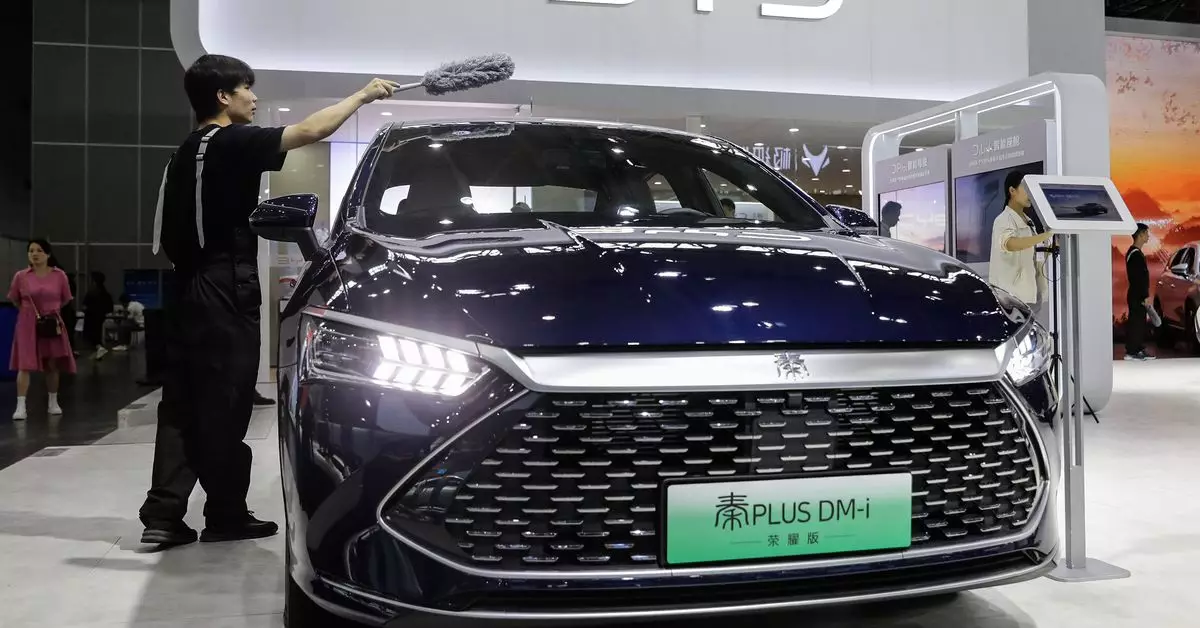In recent times, the Biden administration has proposed stringent regulations designed to safeguard national security by targeting automotive technology imported from “countries of concern,” with China at the forefront. This pivotal move signals a significant shift in the auto industry landscape, particularly concerning electric vehicles (EVs) and connected technologies. The new rules intend to block the sale or import of vehicle software developed in these nations, effectively curtailing the influx of Chinese automotive products into the United States.
At the heart of this policy initiative lies the apprehension surrounding national security. The White House has underscored the imminent threats posed by vehicles that integrate Chinese hardware and software. Reports suggest rising worries about potential remote vehicle manipulation, which could lead to incapacitating incidents on U.S. roads. Further complicating the matter is the risk of foreign adversaries utilizing onboard technology—such as cameras and sensors—to conduct surveillance or gather sensitive data from American citizens and infrastructure. This reinforces the vital nature of the regulations that have emerged from a Commerce Department investigation into the implications of connected vehicle software.
Should these restrictions come into effect, American automakers and suppliers will need to diligently eliminate all Chinese-made components from their vehicles over the next several years. This could create a multifaceted impact within the automotive sector. While intended to bolster national security, the elimination of globally sourced components might also hinder innovation and increase production costs for domestic manufacturers. With an industry steadily evolving toward connectivity and automation, such a drastic shift poses both opportunity and challenge for American automakers aiming to stay competitive in a tech-driven market.
The administration’s proposed tariffs on a wide array of Chinese imports further illustrate the evolving nature of U.S.-China trade relations, especially within the automotive sector. Current measures include a 100 percent duty on electric vehicles alongside increased tariffs on crucial components like batteries. These protective tariffs are intended to dissuade the importation of competitively priced Chinese vehicles, which could threaten the market share of domestic manufacturers amidst a global pivot toward EVs. The need for protective measures is accentuated by the fact that China has positioned itself as the preeminent auto exporter, mainly due to its ability to produce vehicles at lower costs, such as the example of the BYD Seagull—an EV that sells for around $10,000.
The competitive dynamics in the automotive industry reveal conflicting viewpoints among company executives. Some industry leaders, such as Tesla CEO Elon Musk, have expressed that without protective tariffs, U.S. firms could face severe repercussions from Chinese competition. Nonetheless, Musk’s subsequent reversal on support for tariffs highlights the complexity of navigating international trade and domestic interests. Furthermore, Chinese officials have rebuffed U.S. actions, accusing the government of misusing national security as a pretext to restrict legitimate competition. This contentious relationship necessitates a careful balancing act to ensure both competitive fairness and national security.
If adopted, the regulations concerning the prohibition of connected vehicle software are set to be enforced for model year 2027, while hardware bans will commence in model year 2030. The contours of this policy landscape suggest potential overlap with existing federal tax credit provisions that limit benefits for vehicles utilizing batteries sourced from China. This holistic approach to policy indicates a firm commitment to countering foreign influence in the automotive sector.
As the automotive industry braces for the effects of these proposed regulations, the implications extend beyond mere market dynamics. The intersection of national security and economic strategy underpins the United States’ approach to its trading relationships, further entrenching its position in a global context rife with competition and conflict. Ultimately, these regulatory measures will not only shape the future of the automotive industry but also redefine the bilateral relations between the United States and China in the years to come.


Leave a Reply